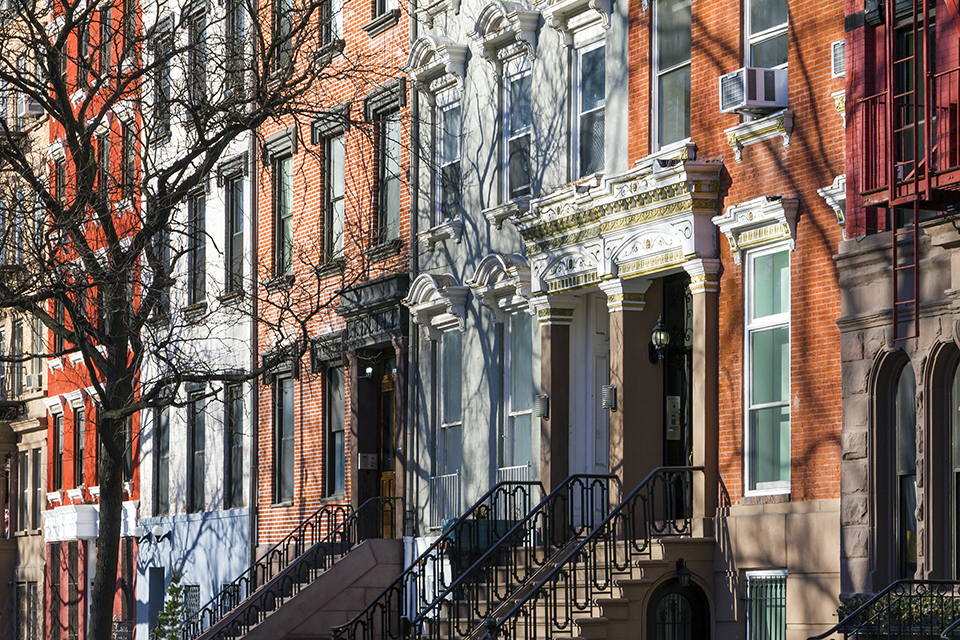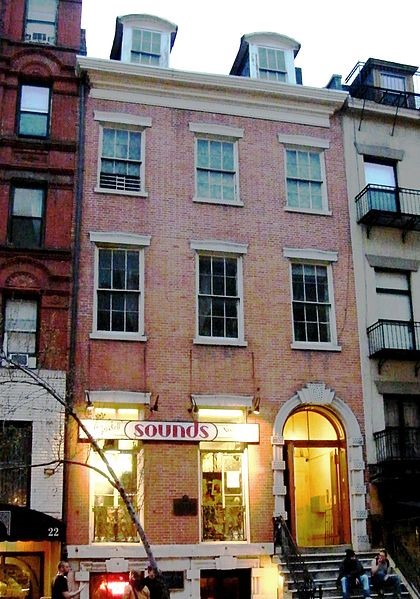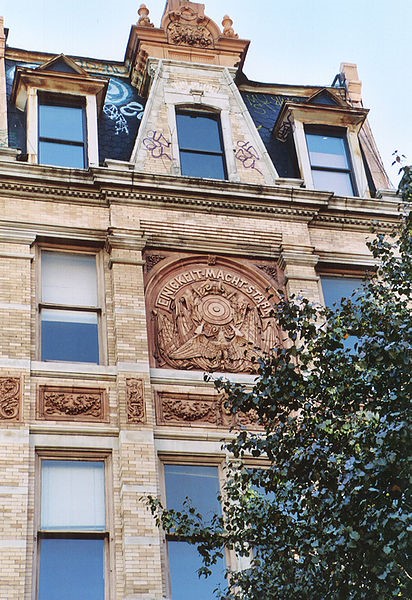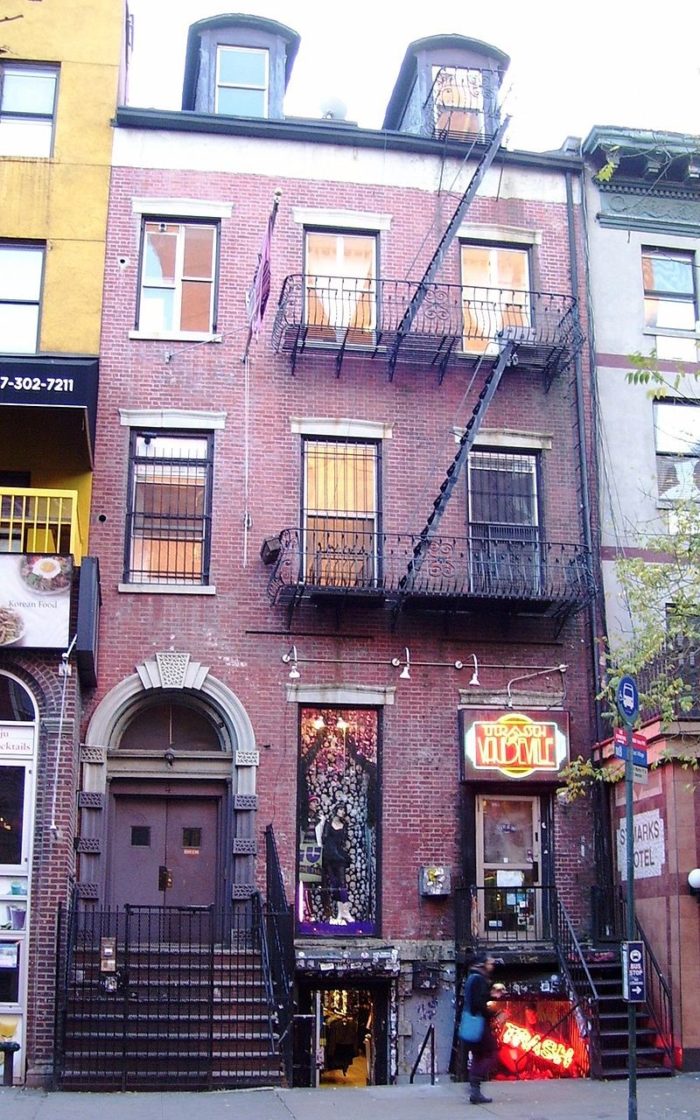The history of St. Marks Place is emblematic of the East Village’s evolution as a neighborhood that embraces the new, the different and the revolutionary.
By the early 19th century, the area now known as St. Marks Place — the three blocks of 8th Street from Third Avenue to Tompkins Square Park — was among the most elegant, upscale residential districts in the city, populated by handsome Greek Revival and Federal style town houses.
While only one building along St. Marks Place is protected by the East Village Historic District, several structures here are designated as individual landmarks. Two, in particular, represent the grandeur of the early 1800s residential heyday: The Hamilton-Holly House at 4 St. Marks and the Daniel Leroy House at No. 20, built in 1832. Both buildings boast traditional high stoops where substantial triple-keystone door surrounds and Flemish bond brickwork make a bold statement. The Hamilton-Holly House is notable for having been home to the widow and children of Alexander Hamilton for nearly a decade, and both buildings have housed notable St. Marks institutions since their inception.
Daniel Leroy House at 20 St. Marks Place (Image: Wikimedia)
In the following decade, the St. Marks area became known as Kleindeutschland or “Little Germany.” Driven by unrest in Europe, Germans (and others) began to arrive in New York City in droves. Once lined by elegant single-family homes, by 1850, half the townhouses along St. Marks were functioning as boarding houses and multi-family dwellings, and just 30 years later, the German-speaking population in lower Manhattan reached 250,000, or about one-quarter of the city’s total population.
Most German new arrivals gravitated to the Kleindeutschland area, comforted by the large number of fellow immigrants as well as the burgeoning number of German taverns, societies, and social clubs. Chief among them was the DeutscheAmerikanische Schlitzen Gesellschaft, or German-American Shooting Society Clubhouse, built at 12 St. Marks in 1888. The large building was once the headquarters for 24 shooting clubs where locals practiced their marksmanship and bonded with their fellow countryman. The building’s German Renaissance revival style, described as “exuberant” and “flamboyant,” is credited with creating for patrons a strong visual and emotional connection to their homeland. The ornate landmarked building functions as a popular neighborhood gathering spot to this day, and is well-known among New York yogis as the East Village home of Yoga to the People.
German-American Shooting Society Clubhouse at 12 St. Marks Place (Image: Wikimedia)
The 1920s brought gangsters and bootleggers to the East Village, and later immigrant families of diverse nationalities — Irish and Italian, along with Jews, Poles and Russians — began to settle in the once primarily German neighborhood. Not long after, the area’s counterculture roots began to form.
The New Yorker sums up the St. Marks bohemians as “those who were Beats in the fifties, hippies in the sixties, punks in the seventies, or anarchists in the eighties.” Perhaps no structure along St. Marks Place is more emblematic of this era than the combined buildings at Nos. 19 – 25. First known as Arlington Hall, a ballroom and community center, in the late 19th century, the establishment later became the Polish National Home. By the 1960s, Andy Warhol was subletting the space for his “The Exploding Plastic Inevitable” multimedia shows featuring the Velvet Underground. Soon after, the space morphed into the well-known Electric Circus Company nightclub and music venue and played host to the likes of Deep Purple, Sly & The Family Stone and Wavy Gravy. In an ironic twist, the building later housed a rehab center where East Villagers could try to clean up in the same building where they may have acquired their habits. In 2005, 19 St. Marks place was converted to luxury apartments.
St. Marks Place 1968 (Image: James Jowers/ Flickr Commons)
In the East Village punk rock revolution that followed in the 70s and 80s, Trash & Vaudeville was known as the clothing store of choice. Founded in 1975 in the aforementioned Hamilton-Holly House, the store was frequented by the likes of Blondie and the Ramones and has been a New York staple ever since. In 2016, Trash & Vaudeville announced it was relocating to digs on East 7th Street. The Hamilton-Holly House, sold for $10 million in April 2016, and in November, the Landmarks Preservation Commission gave approval for the new owners to expand from four to six units and reconfigure the front entry.
4 St. Marks: The storied home of Hamilton heirs and punk rock fashion (Image: Wikimedia)
As gentrification invaded the East Village in the 1980s and police sought to crack down on Tompkins Square Park encampments with a curfew, notorious cries of “Die Yuppie Scum!” ushered in yet another era on this many-lived lane. The New Yorker piece describes St. Marks of the 1990s as “a place where you could geek out any way you wanted. You could join forces with the nerds of St. Mark’s Comics, the skaters doing kickflips at the Cube, or the indie kids leaving secret messages for each other in Xeroxed zines at St. Mark’s Bookshop.”
Today, St. Marks Place is just as diverse, though significantly more gentrified and certainly more expensive than it’s been in the past half-century, but vestiges of its storied past can still be found in the remaining Federalist townhouses, historic community gathering places and old-school watering holes.






